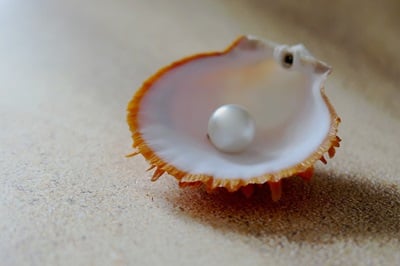In ancient times, pearls coming from the UAE were much sought after, which is revealed by the presence of pearls from this country in other countries across the world, such as Venice, Sri Lanka, India, Rome and even Scandinavia. Fly Emirates to arrive in Dubai or Abu Dhabi for a fantastic tour of the country and enjoy learning about how pearl trading was done here in ancient times. Here’s a look at what you can find out about it:
- Prior to the arrival of the oil industry, which made the UAE so wealthy, it was already thriving through its pearl industry. Pearl diving was done seasonally, but still, there are many families who can trace their ancestors back to the time of the pearl trade, when they were involved in it and carried it out profitably.
- As this industry boomed, Dubai and Abu Dhabi became important for pearl divers who came to settle in them, making them small coastal towns, but today they are modern, industrial cities.
- In the UAE, pearls of all sizes and colours were obtained by diving into the sea, and you can get extensive information about this in the Dubai Museum. You can also find similar details in the Saeed Al Maktoum House. The instruments used, the process, and the colours gained, such as pink and yellow, are all given in these spots located in the Al Fahidi neighbourhood.
- In the Dubai Museum, there is an interesting feature that you must take note of to understand how deeply ingrained this industry is in the lives of the people of the UAE. This feature is a sign that says the money gained from the pearl trade was one million rupees. They were obtained by diving on the 5th and 9th of every month, and it was only during the summer that maximum pears were gained, so it was the busiest month for divers.
- Manual pearl diving is a laborious task, quite unlike how technology is used in cultivating pearl farms today. Divers had to be very skilled in picking the oysters, and in only three minutes, they had to make use of a nose clip and leather finger protectors. The oysters will be put into a basket made from the top. While a 5 kg stone kept them inside the water, a 3 kg stone was used to pull them onto the boat. Their lives were at risk as they could so easily drown, or else they could be bitten by sharks. The money gained from the sale of the pearls collected was Rs. 200 to 300 per month.
- Though the once-famous pearl trading industry in the UAE is not carried out in the same way, its name across the world is quite prevalent for it. One popular international brand that only uses eggs from the UAE is Cartier. Because of this, the main reason that caused a decline in the pearl trade here was the production of artificial pearls in Japan. These Japanese pearls such that they could not be easily differentiated from the real ones. Hence, people purchased their pearls, and the demand for them in the UAE plummeted.
It may be surprising that all the trading was done in those days in Indian rupees, and various units of measurement were in Hindi. The best environment for a pearl fishery is a combination of salt and sweet water, and the pearls from oysters that are grown in such an environment are of the highest quality.
Enjoy a fantastic time in the UAE, discovering the history behind its pearl trade, for which it was so famous in ancient times. The beautiful pearls gathered here from oysters have a pristine beauty and quality like none other. Fly Emirates to come here for culture tours that will bring out various aspects of the UAE’s heritage, of which the pearl industry is an important aspect.























